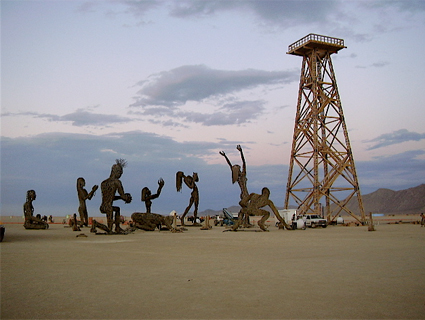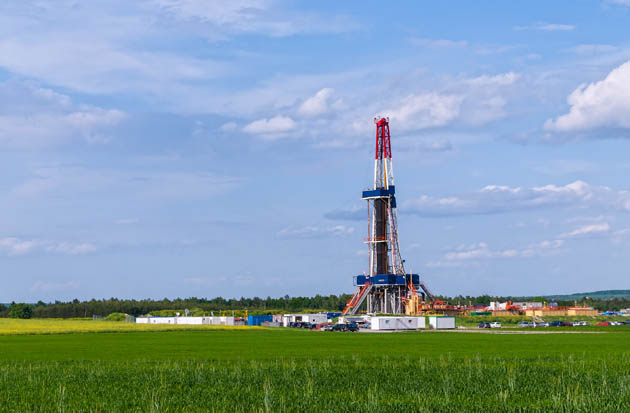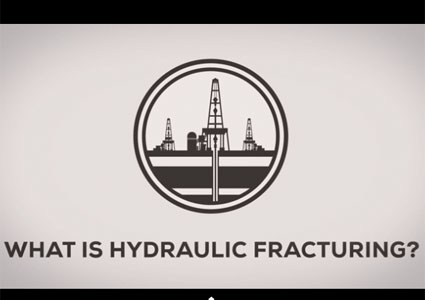
<a href="http://www.flickr.com/photos/30397825@N00/1317273206/in/photolist-31pnr1-8YFQFh-5KxsAZ-83MLrE-3tL4L-afcWzq-4bhBd1-eYJ72P-4EESNW-afcKbq-4GjHyR-6vU7uX-fTEQEp-fTEQEV-vjyvr-5P6aqN-afa3Ar-34hHYB-34nhpA-34hHHD-34nh1E-34hHRB-4rCUXK-bqgRr2-bqgRLH-67x1iC-6BkRwu-dKiQ8A-34nh7Q-34nhaj-8yk1o1-5kTJma-7ZPb1J-7ZPb37-6T9Cp1-5Lpqhx-dGpz56-5vByDV-dGpyHP-8Ev3uP-a31VKU-dGpziT-dGpyPK-dGpyWv-8hqqWT-f9FWpZ-f9FWua-f9FWGk-96uvok-vYAv-fY3yy">skampy</a>/Flickr
This story first appeared on the TomDispatch website.
For years, energy analysts had been anticipating an imminent decline in global oil supplies. Suddenly, they’re singing a new song: Fossil fuels growing scarce? Don’t even think about it! The news couldn’t be better: fossil fuels will become ever more abundant. And all that talk about climate change? Don’t worry about it, they chant. Go out and enjoy the benefits of cheap and plentiful energy forever.
This movement from gloom about our energy future to what can only be called fossil-fuel euphoria may prove to be the hallmark of our peculiar moment. In a speech this September, for instance, Barry Smitherman, chairman of the Texas Railroad Commission (that state’s energy regulatory agency), claimed that the Earth possesses a “relatively boundless supply” of oil and natural gas. Not only that—and you can practically hear the chorus of cheering in Houston and other oil centers—but many of the most exploitable new deposits are located in the US and Canada. As a result—add a roll of drums and a blaring of trumpets—the expected boost in energy is predicted to provide the United States with a cornucopia of economic and political rewards, including industrial expansion at home and enhanced geopolitical clout abroad. The country, exulted Karen Moreau of the New York State Petroleum Council, another industry cheerleader, is now in a position “to become a global superpower on energy.”
![]() There are good reasons to be deeply skeptical of such claims, but that hardly matters when they are gaining traction in Washington and on Wall Street. What we’re seeing is a sea change in elite thinking on the future availability and attractiveness of fossil fuels. Senior government officials, including President Obama, have already become infected with this euphoria, as have top Wall Street investors—which means it will have a powerful and longlasting, though largely pernicious, effect on the country’s energy policy, industrial development, and foreign relations.
There are good reasons to be deeply skeptical of such claims, but that hardly matters when they are gaining traction in Washington and on Wall Street. What we’re seeing is a sea change in elite thinking on the future availability and attractiveness of fossil fuels. Senior government officials, including President Obama, have already become infected with this euphoria, as have top Wall Street investors—which means it will have a powerful and longlasting, though largely pernicious, effect on the country’s energy policy, industrial development, and foreign relations.
The speed and magnitude of this shift in thinking has been little short of astonishing. Just a few years ago, we were girding for the imminent prospect of “peak oil,” the point at which daily worldwide output would reach its maximum and begin an irreversible decline. This, experts assumed, would result in a global energy crisis, sky-high oil prices, and severe disruptions to the world economy.
Today, peak oil seems a distant will-o’-the-wisp. Experts at the US government’s Energy Information Administration (EIA) confidently project that global oil output will reach 115 million barrels per day by 2040—a stunning 34% increase above the current level of 86 million barrels. Natural gas production is expected to soar as well, leaping from 113 trillion cubic feet in 2010 to a projected 185 trillion in 2040.
These rosy assessments rest to a surprising extent on a single key assumption: that the United States, until recently a declining energy producer, will experience a sharp increase in output through the exploitation of shale oil and natural gas reserves through hydro-fracking and other technological innovations. “In a matter of a few years, the trends have reversed,” Moreau declared last February. “There is a new energy reality of vast domestic resources of oil and natural gas brought about by advancing technology… For the first time in generations, we are able to see that our energy supply is no longer limited, foreign, and finite; it is American and abundant.”
The boost in domestic oil and gas output, it is further claimed, will fuel an industrial renaissance in the United States—with new plants and factories being built to take advantage of abundant local low-cost energy supplies. “The economic consequences of this supply-and-demand revolution are potentially extraordinary,” asserted Ed Morse, the head of global commodities research at Citigroup in New York. America’s gross domestic product, he claimed, will grow by 2% to 3% over the next seven years as a result of the energy revolution alone, adding as much as $624 billion to the national economy. Even greater gains can be made, Morse and others claim, if the US becomes a significant exporter of fossil fuels, particularly in the form of liquefied natural gas (LNG).
Not only will these developments result in added jobs—as many as three million, claims energy analyst Daniel Yergin—but they will also enhance America’s economic status vis-à-vis its competitors. “US natural gas is abundant and prices are low—a third of their level in Europe and a quarter of that in Japan,” Yergin wrote recently. “This is boosting energy-intensive manufacturing in the US, much to the dismay of competitors in both Europe and Asia.”
This fossil fuel euphoria has even surfaced in statements by President Obama. For all his talk of climate change perils and the need to invest in renewables, he has also gloated over the jump in domestic energy production and promised to facilitate further increases. “Last year, American oil production reached its highest level since 2003,” he affirmed in March 2011. “And for the first time in more than a decade, oil we imported accounted for less than half of the liquid fuel we consumed. So that was a good trend. To keep reducing that reliance on imports, my administration is encouraging offshore oil exploration and production.”
Money Pouring into Fossil Fuels
This burst of euphoria about fossil fuels and America’s energy future is guaranteed to have a disastrous impact on the planet. In the long term, it will make Earth a hotter, far more extreme place to live by vastly increasing carbon emissions and diverting investment funds from renewables and green energy to new fossil fuel projects. For all the excitement these endeavors may be generating, it hardly takes a genius to see that they mean ever more carbon dioxide heading into the atmosphere and an ever less hospitable planet.
The preference for fossil fuel investments is easy to spot in the industry’s trade journals, as well as in recent statistical data and anecdotal reports of all sorts. According to the reliable International Energy Agency (IEA), private and public investment in fossil fuel projects over the next quarter century will outpace investment in renewable energy by a ratio of three to one. In other words, for every dollar spent on new wind farms, solar arrays, and tidal power research, three dollars will go into the development of new oil fields, shale gas operations, and coal mines.
From industry sources it’s clear that big-money investors are rushing to take advantage of the current boom in unconventional energy output in the US—the climate be damned. “The dollars needed [to develop such projects] have never been larger,” commented Maynard Holt, co-president of Houston-based investment bank Tudor, Pickering, Holt & Company. “But the money is truly out there. The global energy capital river is flowing our way.”
In the either/or equation that seems to be our energy future, the capital river is rushing into the exploitation of unconventional fossil fuels, while it’s slowing to a trickle in the world of the true unconventionals—the energy sources that don’t add carbon to the atmosphere. This, indeed, was the conclusion reached by the IEA, which in 2012 warned that the seemingly inexorable growth in greenhouse gas emissions of carbon dioxide is likely to eliminate all prospect of averting the worst effects of climate change.
Petro Machismo
The new energy euphoria is also fueling a growing sense that the American superpower, whose influence has recently seemed to be on the wane, may soon acquire fresh geopolitical clout through its mastery of the latest energy technologies. “America’s new energy posture allows us to engage from a position of greater strength,” crowed National Security Adviser Tom Donilon in an April address at Columbia University. Increased domestic energy output, he explained, will help reduce US vulnerability to global supply disruptions and price hikes. “It also affords us a stronger hand in pursuing and implementing our international security goals.”
 A new elite consensus is forming around the strategic advantages of expanded oil and gas production. In particular, this outlook holds that the US is benefiting from substantially reduced oil imports from the Middle East by eliminating a dependency that has led to several disastrous interventions in that region and exposed the country to periodic disruptions in oil deliveries, starting with the Arab oil embargo of 1973-74. “The shift in oil sources means the global supply system will become more resilient, our energy supplies will become more secure, and the nation will have more flexibility in dealing with crises,” Yergin wrote in the Wall Street Journal.
A new elite consensus is forming around the strategic advantages of expanded oil and gas production. In particular, this outlook holds that the US is benefiting from substantially reduced oil imports from the Middle East by eliminating a dependency that has led to several disastrous interventions in that region and exposed the country to periodic disruptions in oil deliveries, starting with the Arab oil embargo of 1973-74. “The shift in oil sources means the global supply system will become more resilient, our energy supplies will become more secure, and the nation will have more flexibility in dealing with crises,” Yergin wrote in the Wall Street Journal.
This turnaround, he and other experts claim, is what allowed Washington to adopt a tougher stance with Tehran in negotiations over Iran’s nuclear enrichment program. With the US less dependent on Middle Eastern oil, so goes the argument, American leaders need not fear Iranian threats to disrupt the flow of oil through the Persian Gulf to international markets. “The substantial increase in oil production in the United States,” Donilon declared in April, is what allowed Washington to impose tough sanctions on Iranian oil “while minimizing the burdens on the rest of the world.”
A stance of what could be called petro machismo is growing in Washington, underlying such initiatives as the president’s widely ballyhooed policy announcement of a “pivot” from the Middle East to Asia (still largely words backed by only the most modest of actions) and efforts to constrain Russia’s international influence.
Ever since Vladimir Putin assumed the presidency of that country, Moscow has sought to sway the behavior of its former Warsaw Pact allies and the former republics of the Soviet Union by exploiting its dominant energy role in the region. It offered cheap natural gas to governments willing to follow its policy dictates, while threatening to cut off supplies to those that weren’t. Now, some American strategists hope to reduce Russia’s clout by helping friendly nations like Poland and the Baltic states develop their own shale gas reserves and build LNG terminals. These would allow them to import gas from “friendly” states, including the US (once its LNG export capacities are expanded). “If we can export some natural gas to Europe and to Japan and other Asian nations,” Karen Moreau suggested in February, “we strengthen our relationships and influence in those places—and perhaps reduce the influence of other producers such as Russia.”
The crucial issue is this: if American elites continue to believe that increased oil and gas production will provide the US with a strategic advantage, Washington will be tempted to exercise a “stronger hand” when pursuing its “international security goals.” The result will undoubtedly be heightened international friction and discord.
Is the Euphoria Justified?
There is no doubt that the present fossil fuel euphoria will lead in troubling directions, even if the rosy predictions of rising energy output are, in the long run, likely to prove both unreliable and unrealistic. The petro machismo types make several interconnected claims:
* The world’s fossil fuel reserves are vast, especially when “unconventional” sources of fuel—Canadian tar sands, shale gas, and the like—are included.
* The utilization of advanced technologies, especially fracking, will permit the effective exploitation of a significant share of these untapped reserves (assuming that governments don’t restrict fracking and other controversial drilling activities).
* Fossil fuels will continue to supply an enormous share of global energy requirements for the foreseeable future, even given rising world temperatures, growing public opposition, and other challenges.
Each of these assertions is packed with unacknowledged questions and improbabilities that are impossible to explore thoroughly in an article of this length. But here are some major areas of doubt.
To begin with, those virtually “boundless” untapped oil reserves have yet to be systematically explored, meaning that it’s impossible to know if they do, in fact, contain commercially significant reserves of oil and gas. To offer an apt example, the US Geological Survey, in one of the most widely cited estimates of untapped energy reserves, has reported that approximately 13% of the world’s undiscovered oil reserves and 30% percent of its natural gas lie above the Arctic Circle. But this assessment is based on geological analyses of rock samples, not exploratory drilling. Whether the area actually holds such large reserves will not be known until widespread drilling has occurred. So far, initial Arctic drilling operations, like those off Greenland, have generally proved disappointing.
Similarly, the Energy Information Administration has reported that China possesses vast shale formations that could harbor substantial reserves of oil and gas. According to a 2013 EIA survey, that country’s technically recoverable shale gas reserves are estimated at 1,275 trillion cubic feet, more than twice the figure for the United States. Once again, however, the real extent of those reserves won’t be known without extensive drilling, which is only in its beginning stages.
To say, then, that global reserves are “boundless” is to disguise all the hypotheticals lurking within that description. Reality may fall far short of industry claims.
The effectiveness of new technologies in exploiting such problematic reserves is also open to question. True, fracking and other unconventional technologies have already substantially increased the production of hard-to-exploit fuels, including tar sands, shale gas, and deep-sea reserves. Many experts predict that such gains are likely to be repeated in the future. The EIA, for example, suggests that US output of shale oil via fracking will jump by 221% over the next 15 years, and natural gas by 164%. The big question, however, is whether these projected increases will actually come to fruition. While early gains are likely, the odds are that future growth will come at a far slower pace.
As a start, the most lucrative US shale formations in Arkansas, Pennsylvania, North Dakota, and Texas have already experienced substantial exploration and many of the most attractive drilling sites (or “plays”) are now fully developed. More fracking, no doubt, will release additional oil and gas, but the record shows that fossil-fuel output tends to decline once the earliest, most promising reservoirs are exploited. In fact, notes energy analyst Art Berman, “several of the more mature shale gas plays are either in decline or appear to be approaching peak production.”
Doubts are also multiplying over the potential for exploiting shale reserves in other parts of the world. Preliminary drilling suggests that many of the shale formations in Europe and China possess fewer hydrocarbons and will be harder to develop than those now being exploited in this country. In Poland, for example, efforts to extract domestic shale reserves have been stymied by disappointing drilling efforts and the subsequent departure of major foreign firms, including Exxon Mobil and Marathon Oil.
Finally, there is a crucial but difficult to assess factor in the future energy equation: the degree to which energy companies and energy states will run into resistance when exploiting ever more remote (and environmentally sensitive) resource zones. No one yet knows how much energy industry efforts may be constrained by the growing opposition of local residents, scientists, environmentalists, and others who worry about the environmental degradation caused by unconventional energy extraction and the climate consequences of rising fossil fuel combustion. Despite industry claims that fracking, tar sands production, and Arctic drilling can be performed without endangering local residents, harming the environment, or wrecking the planet, ever more people are coming to the opposite conclusion—and beginning to take steps to protect their perceived interests.
In New York State, for example, a fervent anti-fracking oppositional movement has prevented government officials from allowing such activities to begin in the rich Marcellus shale formation, one of the largest in the world. Although Albany may, in time, allow limited fracking operations there, it is unlikely to permit large-scale drilling throughout the state. Similarly, an impressive opposition in British Columbia to the proposed Northern Gateway tar sands pipeline, especially by the native peoples of the region, has put that project on indefinite hold. And growing popular opposition to fracking in Europe is making itself felt across the region. The European Parliament, for example, recently imposed tough environmental constraints on the practice.
As heat waves and extreme storm activity increase, so will concern over climate change and opposition to wholesale fossil fuel extraction. The IEA warned of this possibility in the 2012 edition of its World Energy Outlook. Shale gas and other unconventional forms of natural gas are predicted to provide nearly half the net gain in world gas output over the next 25 years, the report noted. “There are,” it added, “also concerns about the environmental impact of producing unconventional gas that, if not properly addressed, could halt the unconventional gas revolution in its tracks.”
Reaction to that IEA report last November was revealing. Its release prompted a mini-wave of ecstatic commentary in the American media about its prediction that, thanks to the explosion in unconventional energy output, this country would soon overtake Saudi Arabia as the world’s leading oil producer. In fact, the fossil fuel craze can be said to have started with this claim. None of the hundreds of articles and editorials written on the subject, however, bothered to discuss the caveats the report offered or its warnings of planetary catastrophe.
As is so often the case with mass delusions, those caught up in fossil fuel mania have not bothered to think through the grim realities involved. While industry bigwigs may continue to remain on an energy high, the rest of us will not be so lucky. The accelerated production and combustion of fossil fuels can have only one outcome: a severely imperiled planet.
Michael T. Klare is a professor of peace and conflict studies at Hampshire College and the author, most recently, of The Race for What’s Left (Picador). A documentary movie version of his book Blood and Oil is available from the Media Education Foundation.
Follow TomDispatch on Twitter and join us on Facebook or Tumblr. Check out the newest Dispatch book, Nick Turse’s The Changing Face of Empire: Special Ops, Drones, Proxy Fighters, Secret Bases, and Cyberwarfare. To stay on top of important articles like these, sign up to receive the latest updates from TomDispatch.com here.















